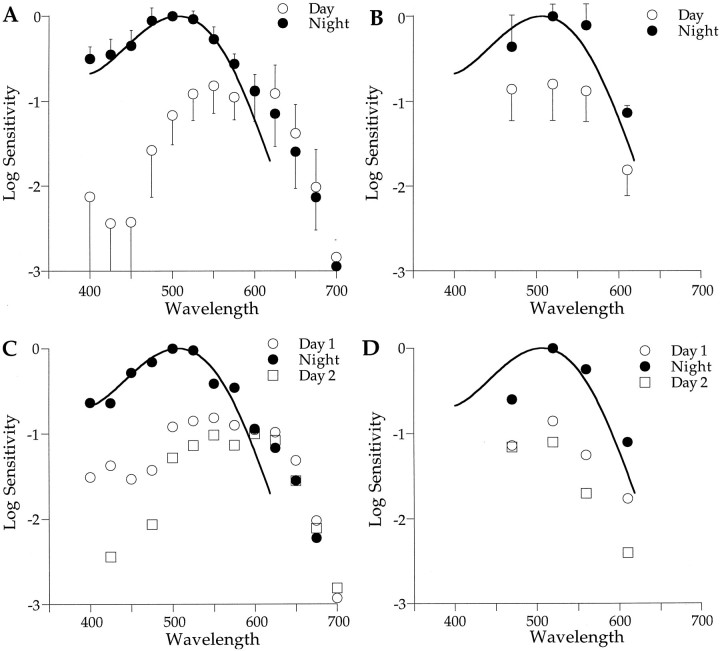Fig. 5.
Spectral sensitivity of the retina changes with time of day. A, Spectral sensitivity of the b-wave is high at night (filled circles; λmax, ∼500 nm) and low during the day (open circles; λmax, ∼550–600 nm). Retinal sensitivity does not change with time of day in the region of 610 nm, which is an isosbestic point. Criterion responses were 40–60 μV for individual experiments (n = 7).B, Spectral sensitivity of the PIII component also increases at night but shows no spectral shift (λmax, ∼520 nm during both day and night). Criterion responses were 10 μV (n = 3).C, Changes in b-wave spectral sensitivity of a single retina over a 2 d period are shown. As in A, sensitivity is low during the day (open symbols) and high at night (filled circles). D, Changes in PIII spectral sensitivity of a single retina during 2 d in constant darkness are shown. Again, sensitivity is high at night (filled circles) and low during the day (open symbols). Day data were taken from 10 A.M. to 3 P.M., and night data are from 8 P.M. to midnight. Solid curves are rhodopsin nomograms (λmax = 506 nm). Error bars in A indicate SEMs and in Bindicate SDs.

